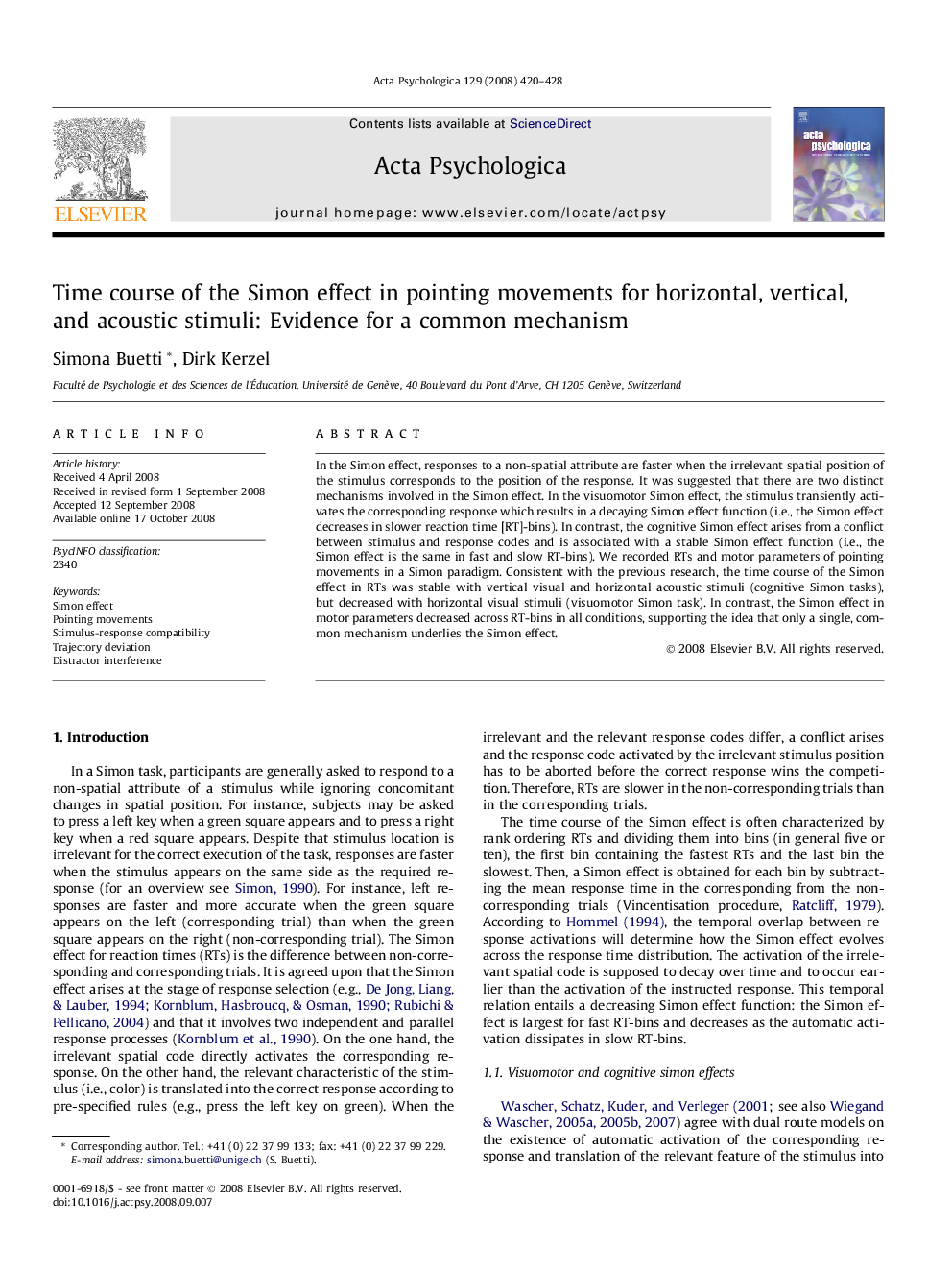| Article ID | Journal | Published Year | Pages | File Type |
|---|---|---|---|---|
| 920350 | Acta Psychologica | 2008 | 9 Pages |
In the Simon effect, responses to a non-spatial attribute are faster when the irrelevant spatial position of the stimulus corresponds to the position of the response. It was suggested that there are two distinct mechanisms involved in the Simon effect. In the visuomotor Simon effect, the stimulus transiently activates the corresponding response which results in a decaying Simon effect function (i.e., the Simon effect decreases in slower reaction time [RT]-bins). In contrast, the cognitive Simon effect arises from a conflict between stimulus and response codes and is associated with a stable Simon effect function (i.e., the Simon effect is the same in fast and slow RT-bins). We recorded RTs and motor parameters of pointing movements in a Simon paradigm. Consistent with the previous research, the time course of the Simon effect in RTs was stable with vertical visual and horizontal acoustic stimuli (cognitive Simon tasks), but decreased with horizontal visual stimuli (visuomotor Simon task). In contrast, the Simon effect in motor parameters decreased across RT-bins in all conditions, supporting the idea that only a single, common mechanism underlies the Simon effect.
